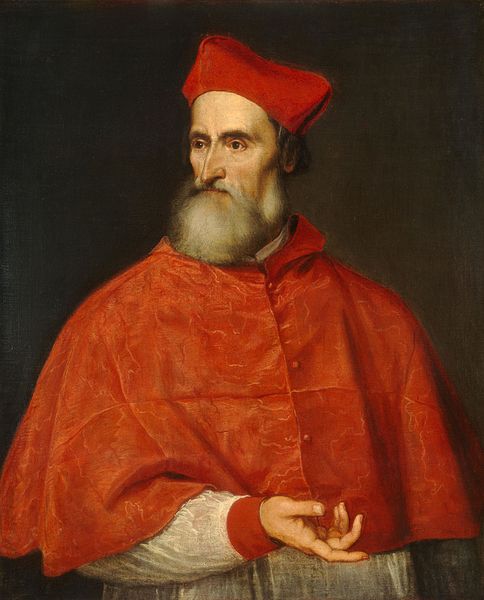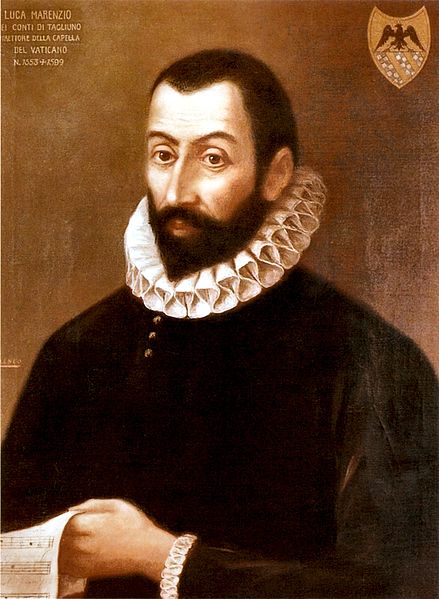A madrigal is a form of secular vocal music most typical of the Renaissance and early Baroque (1600–1750) periods, although revisited by some later European composers. The polyphonic madrigal is unaccompanied, and the number of voices varies from two to eight, but usually features three to six voices, whilst the metre of the madrigal varies between two or three tercets, followed by one or two couplets. Unlike the verse-repeating strophic forms sung to the same music, most madrigals are through-composed, featuring different music for each stanza of lyrics, whereby the composer expresses the emotions contained in each line and in single words of the poem being sung.
The Lute Player (c. 1600) by Caravaggio. The lutenist reads madrigal music by the composer Jacques Arcadelt. (Hermitage, Saint Petersburg)
As a writer, Cardinal Pietro Bembo advocated using vernacular Italian (Tuscan dialect) for poetry and literature, which facilitated composers' creating lyrical styles for the madrigal musical form in 16th-century Italy. (Titian)
In the last twenty years of the 16th century, the madrigalist Luca Marenzio (1553–1599) was an influential composer until Monteverdi's Baroque-era transformation of the madrigal as a musical form.
The commemorative statue of the singer and publisher Nicholas Yonge (1560–1619), who introduced madrigals to England.
Renaissance music is traditionally understood to cover European music of the 15th and 16th centuries, later than the Renaissance era as it is understood in other disciplines. Rather than starting from the early 14th-century ars nova, the Trecento music was treated by musicology as a coda to Medieval music and the new era dated from the rise of triadic harmony and the spread of the contenance angloise style from Britain to the Burgundian School. A convenient watershed for its end is the adoption of basso continuo at the beginning of the Baroque period.
A group of Renaissance musicians in The Concert (1623) by Gerard van Honthorst
San Marco in the evening. The spacious, resonant interior was one of the inspirations for the music of the Venetian School.
Modern French hurdy-gurdy
Musicians from 'Procession in honour of Our Lady of Sablon in Brussels.' Early 17th-century Flemish alta cappella. From left to right: bass dulcian, alto shawm, treble cornett, soprano shawm, alto shawm, tenor sackbut.








